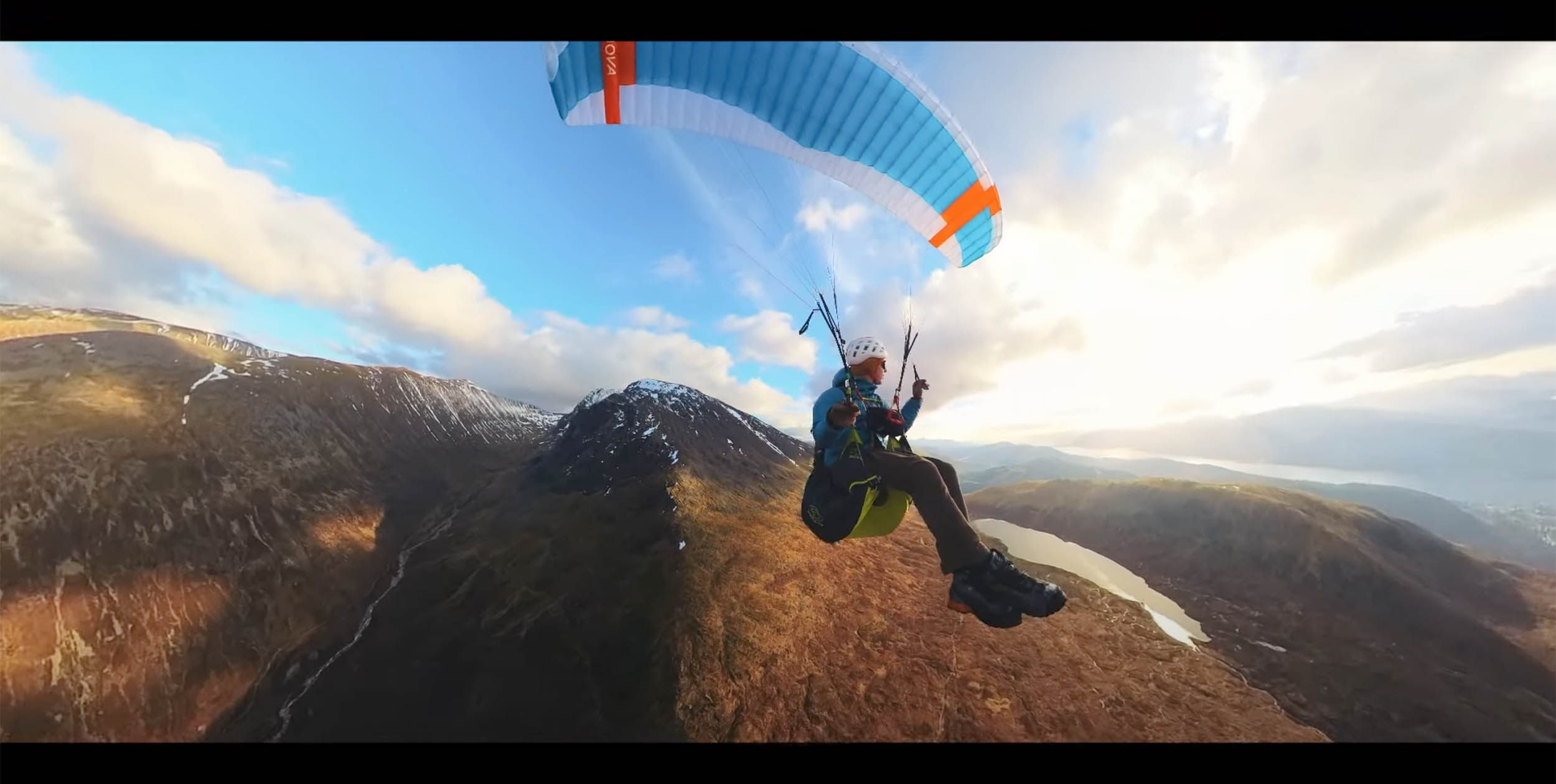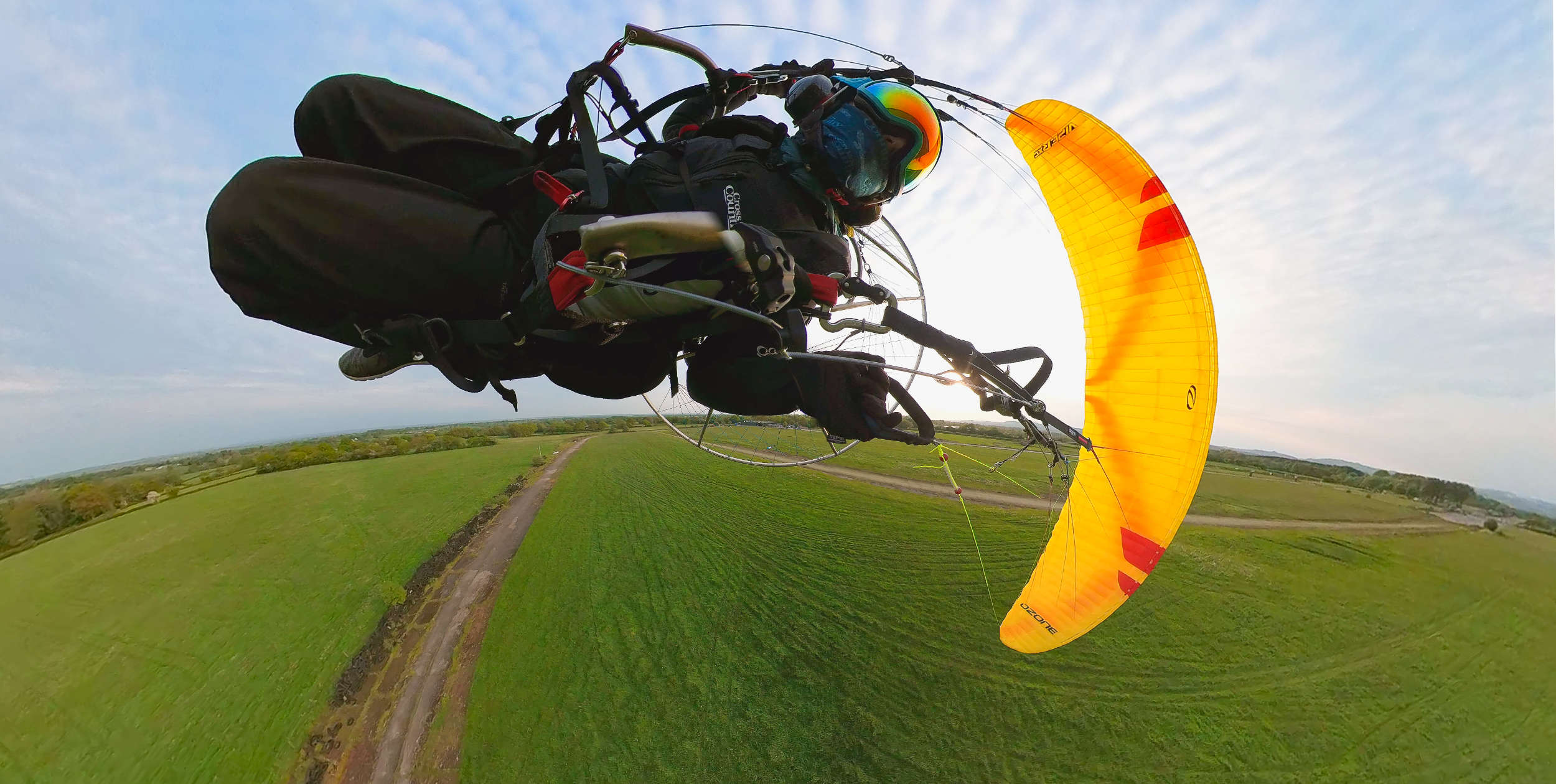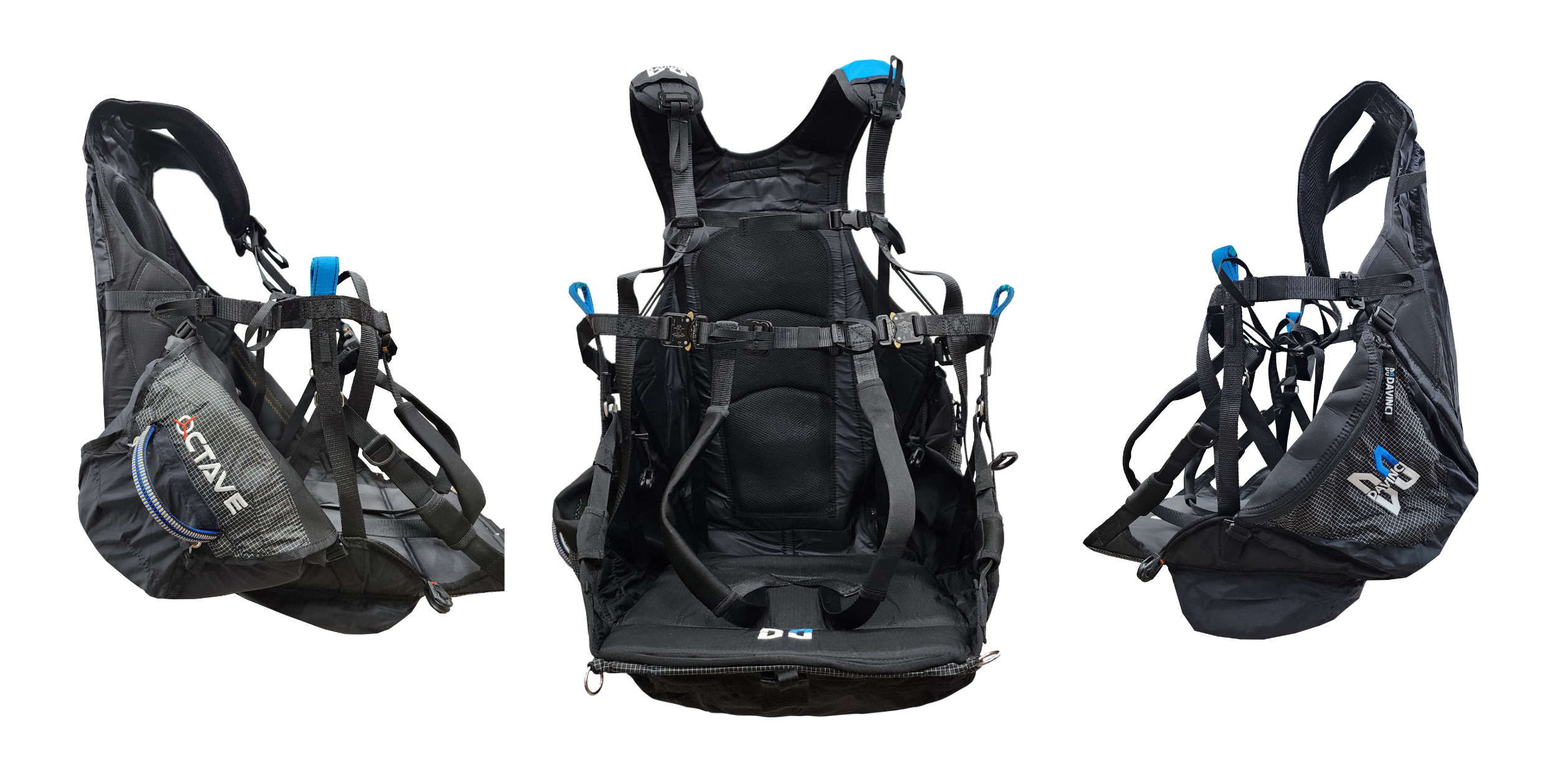Back in 2010 British paramotor pilot and instructor Paul Kilburn saved seven people’s lives with skilful and brave piloting. Tragically Paul died in a paramotoring accident in December 2017; the inquest into the accident published its results this week. In memory of Paul we re-publish this account of his remarkable life-saving flight – first published in Paramotor Magazine, a former sister magazine to Cross Country, in 2011. Interview by Ed Ewing
THE PLACE where this story takes place is in England’s north west, near a stretch of coastline called Fleetwood Beach. When the tide goes out here miles of sand are exposed, attracting dog walkers, kite flyers and families hunting for shells or just splashing from puddle to puddle. But when the tide comes in, it races back in – “incredibly quickly” says the local Coastguard.
It was near here in 2004, on flats like these that a group of 23 commercial cockle pickers tragically drowned when the sea galloped back in. Abandoned by their boss they made desperate phone calls to family as they stood, chin deep in water on dissolving sandbanks. The event shocked Britain, resulted in several jailings and forced changes in the law.
In the summer of 2010 a similar tragedy was narrowly averted by the bravery of a British paramotor pilot, Paul Kilburn. With low fuel, flying low over the sea a kilometre offshore and at some risk to himself, Paul shepherded two adults and five children from sandbar to sandbar after they had been caught out by rapidly rising tides. He then stayed with them, flying circles above them to show the Coastguard where they were. Duty done, he headed back to land where his tank literally ran dry before landing.
The incident happened last year, but Paul asked friends to keep it quiet. However, rumours of his flight slowly leaked out and we tracked him down and asked him to tell us his story.
Speaking to us by phone from his home in Manchester, England, and at times clearly re-living the emotion, he explained to us what happened on that day, 15 August 2010.
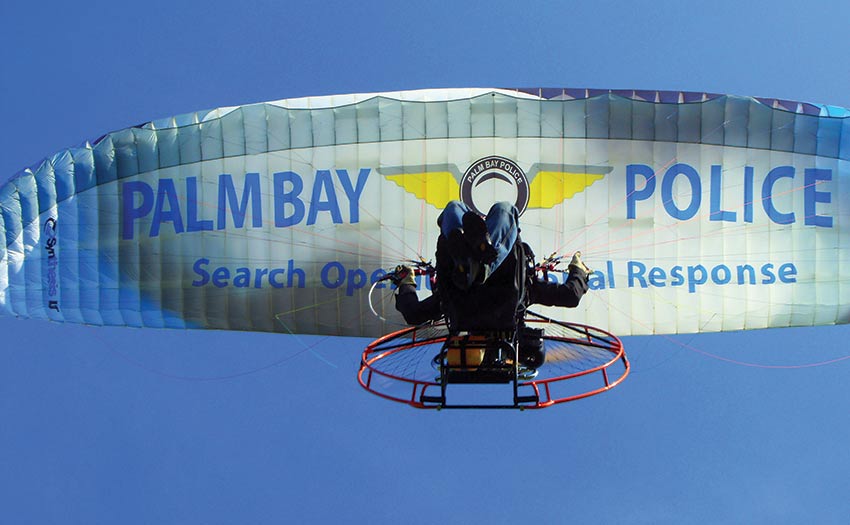 Paul on the Palm Bay Police wing. Photo: Gabe Cassidy
Paul on the Palm Bay Police wing. Photo: Gabe Cassidy
“Right, what happened?” says Paul, settling in. “Well, me and [my flying buddy] Gabe Cassidy went over to Blackpool slash Fleetwood and met up with a gang of lads there.”
Paul was borrowing a second-hand wing. As chance would have it, it was one of the original Dudek wings from the Florida Palm Bay search and rescue squad, which have featured in these pages several times before. It still had the ‘Palm Bay Search and Rescue’ logo on it – a contributing factor perhaps to what was to happen next.
“I thought right, I’ll have a shot on this with a Radne engine,” said Paul. “But I only had a three-litre tank on the Radne, and the tank was only half full.”
It was just after 1pm and his plan was simply to fly up the beach, turn around and land back where he’d started. However, “I flew off up the beach, got to the top and there was a big crowd of people at the water’s edge all pointing out.”
They were pointing to a sandbank about a kilometre offshore. “On the end of the sandbank was an orange dot, that I could see was walking.”
At that point, there was only about two inches of water covering the beach, and in places no water. “Everyone was standing there waving for them to come back. There was a guy with a megaphone shouting, and he was pointing at me, and then he was pointing out to sea.”
Although Paul didn’t know who the man with the megaphone was, he thought he was a coastguard of sorts. In fact he was a member of Coastwatch, a volunteer organisation dedicated to Britain’s coastline.
“I thought, alright … So I flew over, and I’m waving them to come back. Go back, go back. But they were just waving at me.” By now he could see it was more than just one person. In fact it was a group of seven: Mark Gibson, a lift engineer on holiday, his three children, Katie, 14, Caleb, five, and Ruby, three, and his brother-in-law Douglas Ball and his children Elisha, 16, and Joseph, 10.
They had, according to the local Coastguard manager Paul Parkes, “been visiting relatives nearby and had decided to go for a walk in the pleasant weather. They walked a long way out across the sands at Fleetwood then the tide turned and they were stranded.”
Paul flew further out to sea, and then directly at them. “I was waving with my hands saying ‘Go back, go back,’ because I could see the tide was coming in. Then they realised and they started running.”
The father in the water, Mark Gibson, later spoke to a local newspaper, the Blackpool Gazette, and said, “The man in the paraglider was shouting for us to run as fast as we could and get off the beach.” They did just that.
Seeing they were heading back to shore and thinking his job was done Paul headed back too. “Next minute, the bloke with the megaphone was looking at me, and has changed his direction, and is sending them back.”
Looking back he saw the tide had started to race in. “I thought, ‘Oh Jesus’, then I flew back thinking I haven’t got enough fuel to get over there, but we’ll give it a shot.”
In just a few minutes the situation had changed dramatically. “As I was flying over I could see the water coming and swirling round in the sand, and it actually started to look pretty frightening.”
By the time he got back towards what was left of the sandbank the stranded family was up to their waists in water. “I’m now sending them back, ‘Go back, Go back’. So they turned around to go back.”
However, there was now a dip between where they were and the rapidly disappearing sandbank that they had come from. “As they were trying to get back the tide had come in behind them and trapped them on a sort of ledge. The water was rushing past them. Just to watch it coming in was frightening.”
Aware of his low fuel, and desperate to get help, Paul got on the radio to Gabe, “screaming” for him to call the coastguard and come and take over. However, Sod’s Law dictated that Paul wasn’t using his normal radio that day either, and so his transmissions went unheard. In fact, the Coastguard had already received “multiple” calls from people on the beach, which included the frantic mothers of the children, Tracey Gibson and Donna Ball, and grandmother Rose Winterburn.
“They then got stuck, and the tide was up to their chest region. Some of the bigger ones were holding the little kids in their arms. I was thinking, oh my God, what have I done? The tide came in so fast it was sickening.”
As the tide came up Paul was flying very low, close to the waves. “I could see the high bits, sandy bits – and I’m pointing at them and then at the sandy bit and I’m telling them to move to that bit. All the time I’m just circling dead low with them.”
In the sea, Mark was carrying his two youngest children and the sea was up to the chest of his 14-year-old daughter. He followed the instructions from above. “[The pilot] could see the higher sandbanks under the water and he was directing us there for a better place to stand … he put himself in danger because he came really low so he could shout to us. It was frightening.”
All up, Paul moved the family “half a dozen times maybe, from one point to the next point”. He adds, “I just kept doing that for, I don’t know, it felt like a lifetime. How long it actually was I really don’t know.”
At this point, in the distance he saw a lifeboat. “And I was thinking fantastic, I’m going to leave now because I know I’m going to run out of fuel.”
He gained a bit of height, but as he did so he saw the lifeboat change direction. “I thought again, oh my God, what have I done?”
He flew straight back to where the family was. “I was watching this guy, and he had this baby in his hands,” he pauses, “He’s got this kid in his hands, the tide now is almost up to their chins. I’m still screaming on my radio, I climbed up a bit more, stayed directly over the top of them, and I thought Right, if I get enough height they might see me. If I run out of fuel I might be able to get to the sandbank – offshore – and hopefully the guy will see me in the boat.”
Paul went “higher and higher and higher” flying a tight spiral directly above the family. “Eventually the boat turned around and started coming back to us.”
In the lifeboat were Neil Atkinson and Stephen Firth. Lifeboatman Neil told the local paper, “The paraglider kept circling the spot … so we knew just where they were.”
When the boat arrived minutes later “everybody was up to their neck in water”. He pauses again and adds bluntly, “I reckon another two minutes and they’d be dead the lot of them.”
Paul stayed to see the first person rescued and pulled into the lifeboat.
“And then I shot off … I went across the water, everybody on the beach is clapping, I got to the field, ran out of fuel, landed and then just kind of broke down in the field. It was too much to take in.”
All seven were rescued and, after being checked over by paramedics, went home later that day, “cold and wet” according to the Coastguard.
Reflecting on his flight now, from the security of an armchair and several months’ distance, Paul clearly still struggles with what happened, and how close he came to seeing seven people drown while risking his own life. “It’s hard to explain how ferocious that water is … Just looking through that water was absolutely frightening. It pulls the sand round underwater. I’m sure the guy went in and under at one point.”
The galloping tide, although natural, has been exacerbated by recent engineering works, says Paul. “They’ve put concrete water breakers at Fleetwood, and instead of breaking the water what it does now is it pushes it round the corner. So what used to take say 20 minutes now takes five. If anybody is on the sandbank it just cuts them off, they’ve got no chance.”
Despite calls to the contrary – the headline in the paper said “the hunt was on” to find the “mysterious paraglider” who helped save the family – Paul kept his head down. However, Tracey Gibson, the mother on the beach, tracked him down later in the year. Just before Christmas he had an email from her. She wrote, “This summer my family was involved in a terrible incident on Fleetwood Beach. I very nearly lost them all and would have if it wasn’t for the help of a paraglider.”
They spoke on the phone and “had a good chat,” Paul said. “She said they knew they were going to die, and then all of a sudden this paraglider came out of the middle of nowhere, with the word ‘Rescue’ on it. She said it was like an angel.” Paul stops. “I’m sitting here now, my eyes are streaming … You just don’t think things like that can affect you but it does, massively.”
Paul reckons he had one-and-a-half litres of fuel in his engine when he took off, which would have given him a flight time of no more than half an hour. The flight took less than 30 minutes, but for those seven people trapped by rising water, every one of those minutes counted.
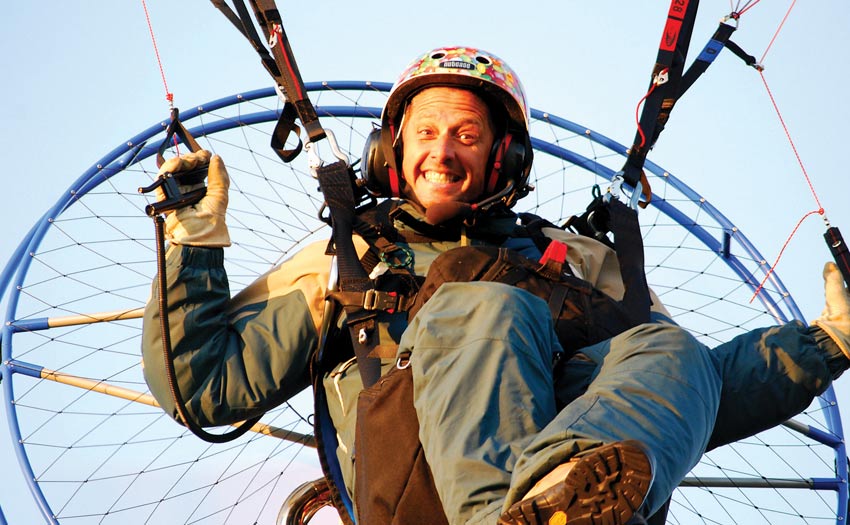 ‘Are you Paul Kilburn?’ Photo: Gabe Cassidy
‘Are you Paul Kilburn?’ Photo: Gabe Cassidy
How did Paul’s story get out?
When Paul landed only one other pilot was in the field with him. After hearing what had happened the other pilot agreed to Paul’s wish to keep what had just happened quiet. However, word got out and, months later, says Paul, “I was at a parachute repack and a guy came over and said, ‘Are you Paul Kilburn? I believe I’ve got to congratulate you.’” Gabe Cassidy, Paul’s best flying buddy, cottoned on, worked the story out of Paul and then got in touch with Paramotor Mag. “I had a heart to heart and convinced him it’s for the good of paramotoring,” explained Gabe, adding in a friendly way, “Tee hee!”


